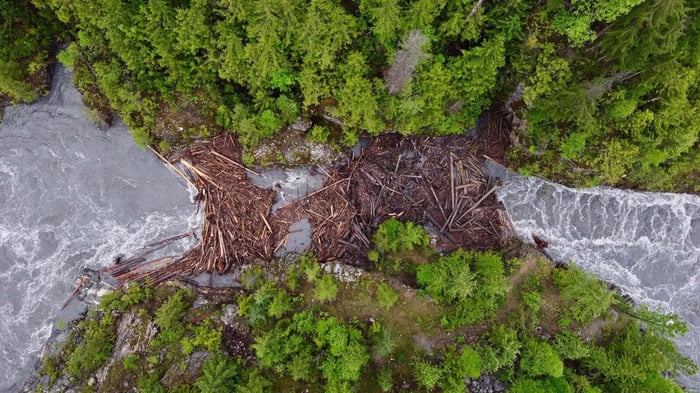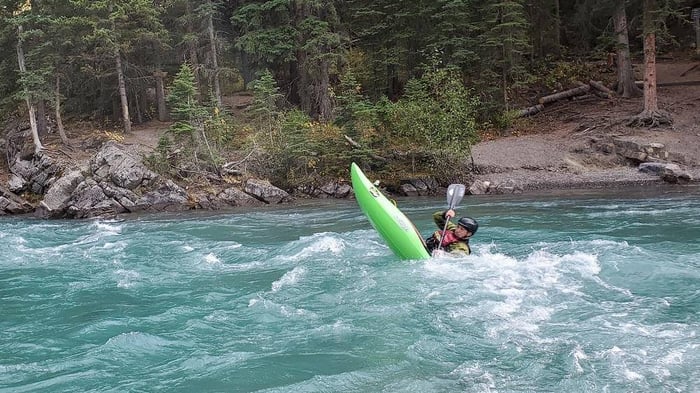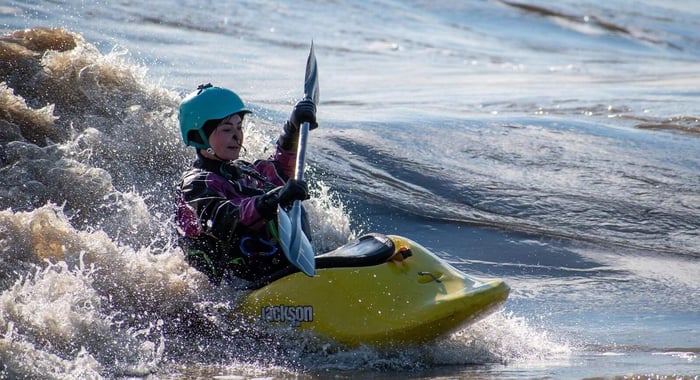The river is our playground, and while familiar runs can often feel like static beings, anyone who has been paddling whitewater for any length of time comes to appreciate just how false that notion is. The river is constantly changing, banks are collapsing, trees are falling into the flow and occasionally the bottom of the river, subject to the constant erosion of moving water, will change dramatically. It is these forces that force us, as paddlers, to be ever vigilant of the changing face of the river, and to take little for granted. In five years alone I have borne witness to numerous changes on seemingly bedrock rapids on the local runs in Revelstoke. And while I consider myself diligent and constantly aware now, that wasn’t always the case.
When I started kayaking, I had little appreciation for how dynamic and ever-changing rivers can truly be, in part due to my belief in the geological time scale (where my lifespan is but a speck) and in the other part due to bedrock looking really, really solid for the most part. The first inkling that I might have been mistaken regarding my beliefs on the permanence of river beds came during an autumn which brought an unprecedented rainfall to Revelstoke, creating some of the highest water levels on record. The biblical flood moved boulders on the Jordan and indirectly led to the formation of a giant log jam on the Illecillewaet’s Box Canyon section that still persists today, five years later. At the time, the event seemed to me a one off, but biblical floods seem ever more common as nearly every spring freshet brings changes to the rivers around Revelstoke. The Jordan has seen the creation of a ledge below the infamous slide at #4, and a mid-rapid pool drain on #5, both of which make the drops more technical and consequential. The Illecillewaet Box Canyon in turn has had countless small changes, many of which require learning new lines as waters drop post flood every summer. And last but not least, the Lower Perry experienced a landslide that created an entirely new drop between rapids, and just this season, high water toppled the seemingly bedrock weir at the end of the canyon.

In addition to changes in the river bed and specific rapids, the far more insidious hazard at play on the river is wood. While it’s easy to remember to turn on your wood radar in the spring -when it often feels like paddling through a forest as it collapses around you- time has also taught me some hard lessons with wood appearing when and where you least expect it. Ultimately I’ve come to appreciate how ever changing the river can be, taking nothing for granted, appreciating the goods while they’re good, and doing my best to stay diligent and face the strange changes.
A video showcasing some of the changes to the local Revelstoke runs I’ve witnessed in the past few year: https://www.youtube.com/watch?v=SFUM4Zqd-AM
And if your need inspiration to scout more, a video where my decision not to nearly cost both myself and a close friend our lives: https://vimeo.com/251765491
Stay Safe and Happy Paddling
- Koby





















































